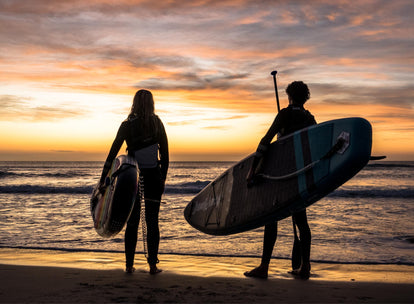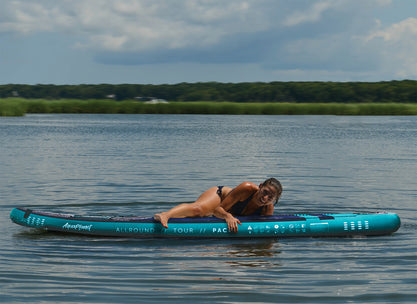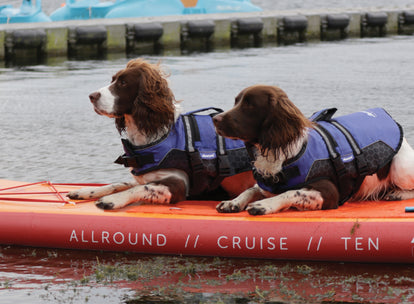As the leaves turn and crispness fills the air, the appeal of the UK's rivers, lakes and coastal waters endures. But for paddleboarding, the winter months bring unique considerations with changing winds, tides and currents. Arm yourself with knowledge, prep properly and you'll be ready to take on the season's aquatic adventures. Let's dive in!
Understanding wind patterns

Brisk winter winds can significantly impact paddleboarding. Check marine and inland forecasts for wind speed and direction before heading out.
- Paddling into the wind on your outbound leg means an easier return later when you're tired.
- In gusty conditions, stay closer to shore or paddle in sheltered areas where winds are less intense.
- Be aware that even winds over 10mph can be hard to paddle into - offshore winds can potentially blow you out to sea, so take special note of the wind direction when paddling at the coast.
- If you get caught out and are struggling to make headway into wind, remember it will be easier going if you kneel down and make yourself less of a sail.
- Remember that conditions can change and the wind where you are launching may be quite different to where you are headed.
Timing launches with tides

The UK's substantial tidal flows mean timing your launch is key. Consult tide tables, guide books or apps to know water levels and timings for your location.
- Launching at high tide may offer more water depth, more launch options or a shorter walk across the beach.
- Do your research or get local knowledge about the strength and direction of tidal races or flows. Flows of more than 2 knots of current can make paddling out or returning difficult at certain times.
- Incoming tides can help you return if the wind is against you. But make sure you know when the tide is turning and don’t rely on the wind staying the same.
- A well planned route on a suitable tidal river can take you upstream with the flow and back on the returning tide - a really satisfying paddle if you can make it work!
Harnessing currents

Currents in rivers and estuaries can be significant in winter. Check their speed and direction before setting your course.
- Plan to paddle against the current on your outbound leg.
- For your return, paddle with the current to conserve energy.
- Avoid areas with exceptionally strong currents if you're a beginner.
- Be very aware of hazards created by higher water levels and faster flows. Make sure you know your route and avoid major dangers such as weirs and other water features.
Dress for warmth and safety

Cold water immersion, i.e., immersing yourself in cold water up to your neck, is no joke. Use a wetsuit or drysuit along with waterproof boots, gloves and a hood to stay warm if you fall in.
- A PFD provides crucial extra buoyancy to keep your head above water.
- Attach an appropriate leash (check our blog on what leashes to wear) to keep your board close in case of falls.
- Carry a whistle and your phone in a suitable waterproof case to call for help if needed.
- Make sure you are well practised at re-mounting your board while wearing your winter kit - it will feel a bit different to the freedom of summer shorts and t-shirt.
Respect wildlife and habitats

Winter offers unique wildlife viewing opportunities. Keep distance and avoid causing disturbance with loud noises.
- Use binoculars or zoom lenses to observe seabirds and marine mammals.
- Never pursue or encircle animals to get photos.
- Avoid paddling into known nesting sites or near young animals.
- Confirm paddling is permitted before entering protected habitats.
Check for closures and restrictions

Some areas impose seasonal restrictions to protect wildlife. Verify regulations before embarking.
- Look for notices posted near launch areas and parking facilities.
- Check local council and waterways websites for closure info.
- Respect all signed off-limit areas and paddling prohibitions.
Speak with local paddling communities

Leverage local knowledge! Join area paddling groups and talk to experienced winter paddlers.
- Shops and clubs provide insights on best practices for specific areas.
- Group outings let you learn from seasoned paddlers.
- Online forums give timely advice on seasonal conditions.
- There are paddlers guide books available for virtually every inch of UK coastline which have great paddling routes and lots of safety advice for all levels of experience.
By understanding winter's unique rhythms, conditions don't have to stop the fun. Respect the environment, prepare properly and you'll be primed to make the most of the UK's captivating winter waters.
Happy paddling!









